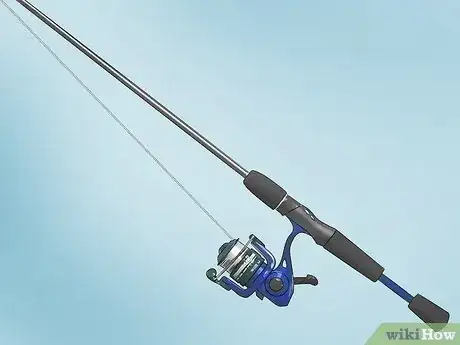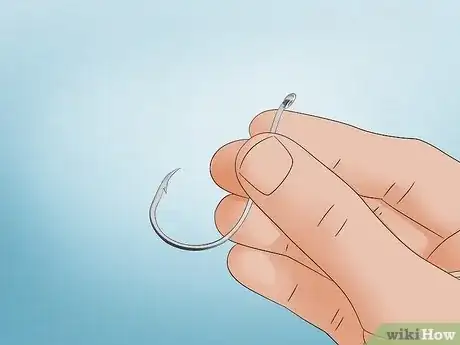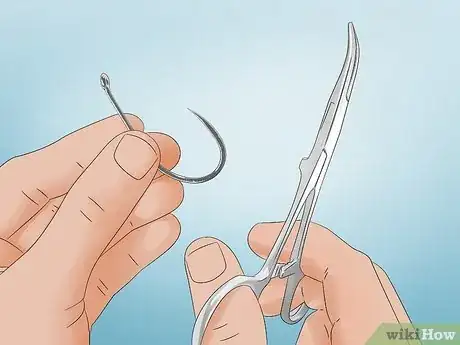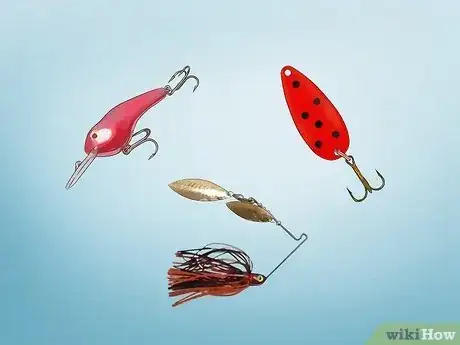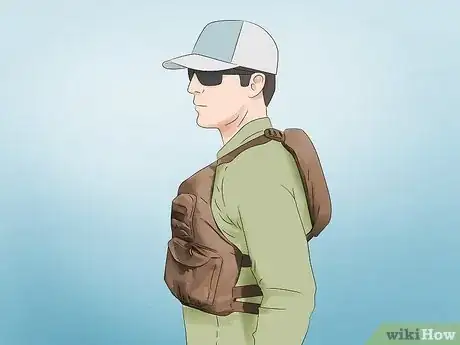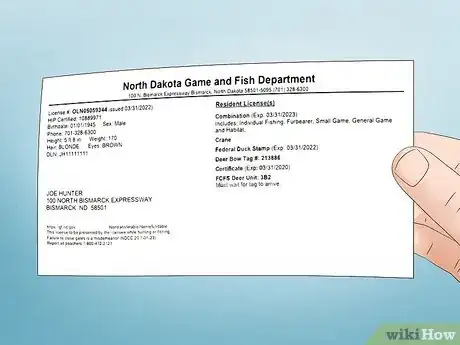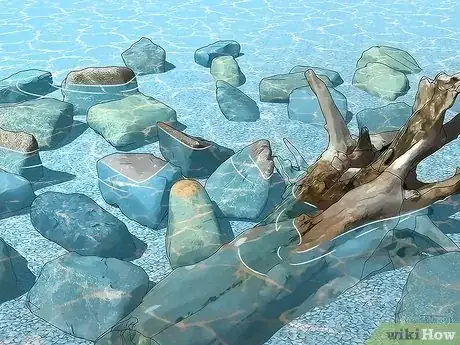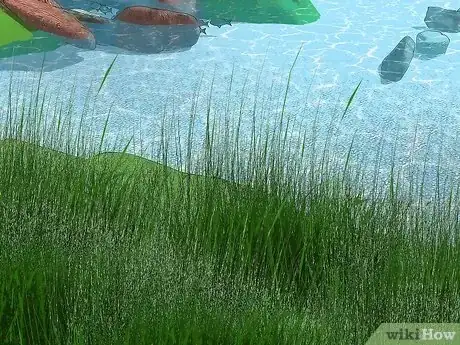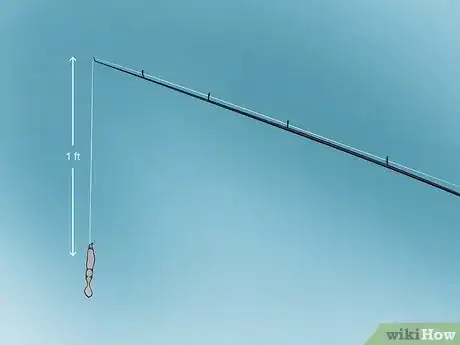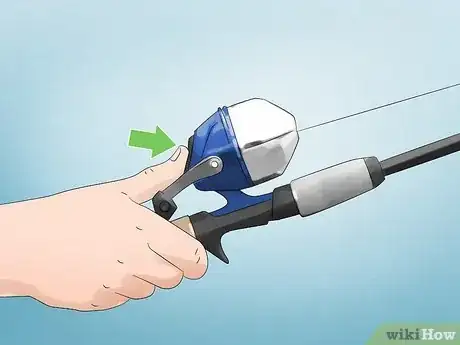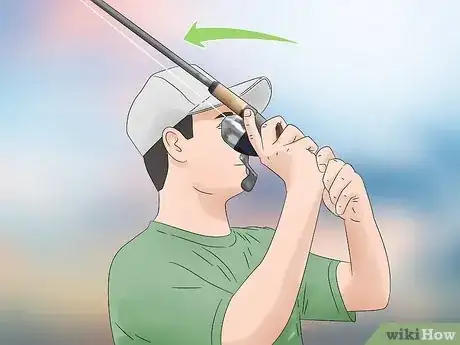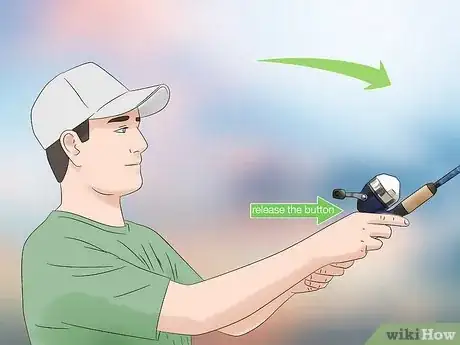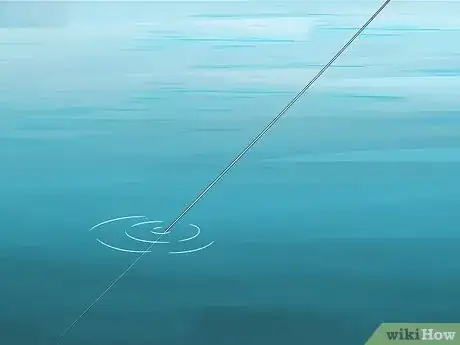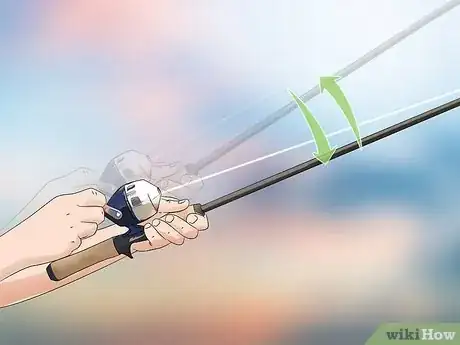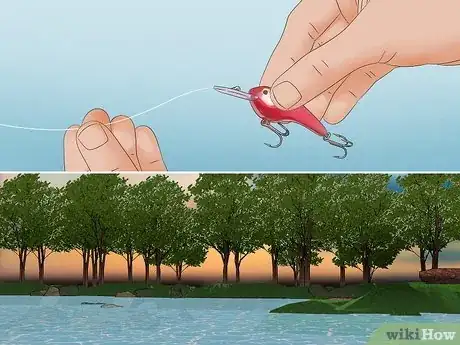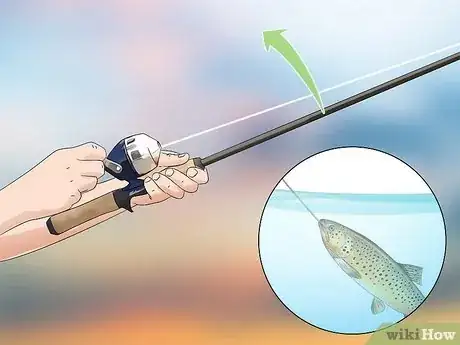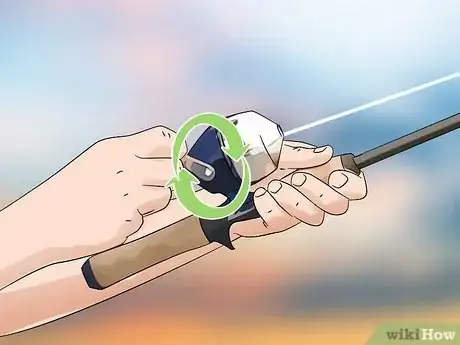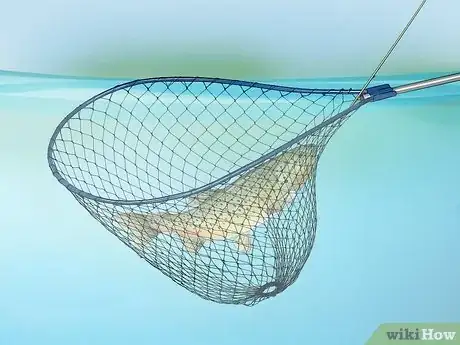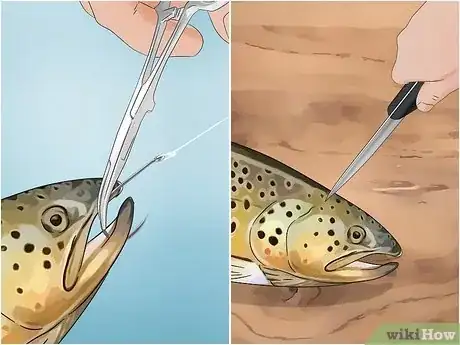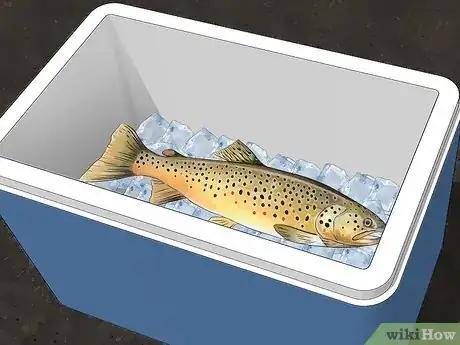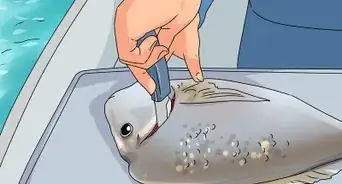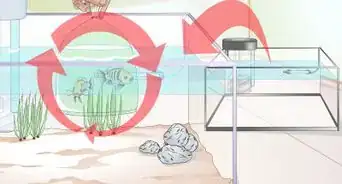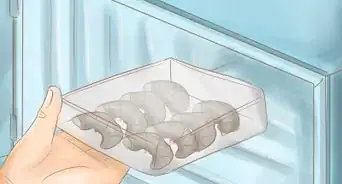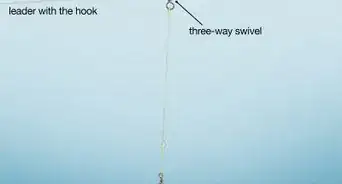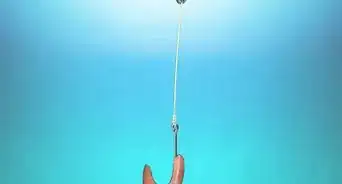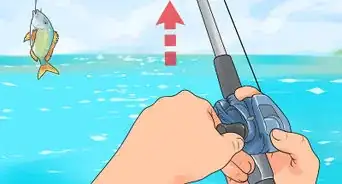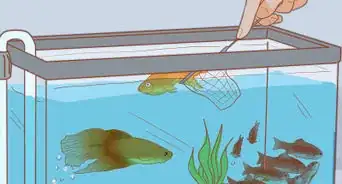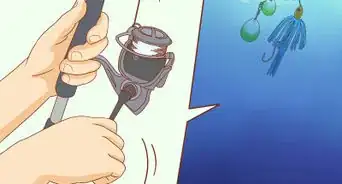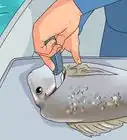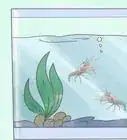This article was written by Kathy Sparrow, MA and by wikiHow staff writer, Madeleine Criglow. Kathy Sparrow is a fly-fishing instructor and adventurer at heart. Kathy is the co-founder and previous manager of the Kingfisher Inn, a fly-fishing lodge on the Lower Laguna Madre in Texas. She is the author of "On the Mother Lagoon: Flyfishing and the Spiritual Journey" and "The Whispered Teachings of Grandmother Trout” a novel conveying the feminine perspective of fly fishing. Kathy is also a Certified Canfield Trainer in Canfield Methodologies. She guides individuals through the process of embracing change by expressing confidence, awareness, and courage through the tools of writing, fly fishing, and intentional conversation. She has a MA in English with an emphasis in Literature and Cultural Studies from the University of Texas-Pan American.
There are 22 references cited in this article, which can be found at the bottom of the page.
This article has been viewed 8,002 times.
Planning your dream lake fishing trip? Lakes offer amazing fishing opportunities, whether you're trying to catch a scrumptious meal or simply going for the fun of it. If you're a beginner, we're here to help with everything you need to know. We'll break down all the gear that you need, the best spots to fish in a lake, and last but not least, how to cast your line for the perfect catch!
This article is based on an interview with our fly-fishing instructor, Kathy Sparrow, MA. Check out the full interview here.
Steps
Best Gear for Lake Fishing
-
1Set up your fishing pole with a spin cast reel and fishing line. If you're new to lake fishing, a 7 ft (2.1 m), medium weight fishing pole will be a great choice. This setup is perfect for bass, lake trout, and pike.[1] Then, attach a spin cast reel to your fishing pole, insert your fishing line, and weave your line through each guide of the fishing pole to make sure it's secure.
- Use a medium heavyweight rod if you're fishing for catfish and salmon.
- Spin cast reels are a great choice for a beginner, as they are affordable and allow you to easily cast with a button.
-
2Go for a barbed hook if you want to keep your fish. A barbed, single-point hook is strong enough to hook most fish, and it's also a little easier to dislodge from the fish's mouth. If they're legal in your area, you can also try a treble hook. These hooks have three barbed points, which can help secure your hold on the fish. After you've chosen the perfect hook, tie it to your line.[2]
- If you plan on keeping your fish, be sure to look up the laws and restrictions in the area on your local government's website. Many areas impose size restrictions on the fish you're allowed to keep to conserve the fish population.
Advertisement -
3Use a barbless hook and a hemostat if you're releasing the fish. A barbless hook is missing the V-shaped point at the end of the hook, which helps you dislodge it without hurting the fish. Choose one with a single point to minimize damage. Be sure to bring along a hemostat as well! This is a special fishing tool that helps you unhook a fish.[3]
- If you don't have a hemostat, bring along a pair of pliers to unhook the fish.
-
4Bring along a variety of baits and lures. To increase your chances, bring lures like plugs, spinnerbaits, and spoons. Popular lake fish (like lake trout and bass) are drawn to these since they resemble small fish and crawfish, two major parts of their diet. If you'd rather use live bait (worms, minnows, crickets, etc.), look up the restrictions in your area first. Once you're out in the water, bait your fishing hook.[4]
- Some states and regions like Oregon and Washington prohibit the use of live bait.[5]
- If you're new to fishing, consider attaching a bobber to your line as well. Otherwise known as a float, these help your bait move with the current and can even help you spot when a fish is biting at your lure.
-
5Bring a fishing net to make your catch. Take a net with you even if you intend to release your fish. It's the perfect tool to guide your fish to shallow waters so you can either keep it for dinner or simply lift it up for a quick photo. Try a fishing net with a short handle to make netting the fish easier after you catch it, and opt for one made of rubber to decrease the risk of injuring the fish.[6]
-
6Wear weather-appropriate clothes in understated colors. If it's hot outside, a T-shirt and shorts/pants in neutral colors or a camouflage pattern will work. For shoes, opt for sturdy sandals, water shoes, or wading boots if you're standing in the water. In the wintertime, wear long underwear, thermal socks, a long-sleeve shirt, and rain gear. Opt for boots or wading boots to keep warm. For adequate protection, wear polarized sunglasses, a hat, and sunscreen.
- If you're fishing in a boat, make sure to wear a life vest.
- Avoid bright colors, as this can scare off the fish.
-
7Buy a fishing license no matter where you fish. The guidelines vary depending on where you are, but in the United States, all states require you to buy a fishing license. To buy a license, check out your state's Department of Fish and Wildlife website or find a local vendor to buy one in person (many fishing supply shops can sell you a license). Then, print your license or download the mobile version to have it ready to present to a local ranger at any time.
- On average, a fishing license costs $25.42 for a resident and $61.52 for a non-resident.[7]
- Be sure that you don't forget to buy a license! Getting caught without one can lead to a ticket and fines.
Location and Timing
-
1Find fish in areas with rocks and fallen branches. Fish like having places to hide for protection. To boost your chances, fish in locations with rock piles, branches, and logs.[8]
-
2Increase your chances by seeking out shady spots and deeper waters. Many lake fish like lake trout and brook trout prefer slightly cooler habitats. To find cool water, seek out deeper waters and areas with a lot of shade and tree cover.[9]
-
3Check out the inlets and outlets of the lake. These areas are where the river or stream flows into the lake. Fish like to spend time in these areas, as the water is slightly cooler and the flowing current brings a steady supply of food.[10]
-
4Spot more fish at the edges and drop-offs of man-made lakes. Man-made lakes, like reservoirs, are usually created by damming nearby streams and rivers.[11] If you're fishing in a man-made lake, search for fish near the edges and drop-offs (sometimes referred to as lakeside areas). Fish prefer these areas for their steady food supply and deeper waters.
-
5Locate fish in areas with more vegetation and foliage in natural lakes. Since fish like having plenty of hiding spots, they often prefer locations with water lilies, pondweeds, and other underwater plants.[12] If you're fishing in a natural lake, look for areas that offer a wide variety of aquatic vegetation.
-
6Fish in the early morning or late afternoon to increase your chances. If you can, start your fishing adventure early and be out in the water before the sun rises. This will increase your chances of spotting fish, as the water is cooler in the morning. If you'd rather sleep in, the late afternoon and early evening is another optimum time, as the water cools off as the sun does down.[13]
Casting Your Line
-
1Reel in the line until the lure is 1 ft (0.30 m) away from the tip of the rod. Facing the direction in which you would like to cast, take hold of the reel handle (A.K.A. the reel crank) and turn it counter-clockwise. Stop when the lure is about 1 ft (0.30 m) away from the end of your fishing pole.[14]
-
2Push the button at the top of your reel and hold it with your thumb. Pressing this button starts your casting process, as it preps your line to be released once you let go. Keep a firm hold on the button to make sure you don't release the line on accident.[15]
-
3Hold the rod straight in the air and move it back behind your shoulder. This is the first step of your overhead cast.[16] Before beginning the cast, look behind you to make sure that there are no people or tree branches in the way.
-
4Bring the rod forward, taking your thumb off the button to cast your line. With your rod falling straight behind your shoulder, throw it forward and stop the rod, simultaneously taking your finger off the button. This will release the line and cast it into the water.[17]
Basic Techniques
-
1Watch the fishing line for movement. Now that you cast your line, it's only a matter of time before a fish takes the bait (or lure). To make sure you don't miss any fish, keep an eye on your bobber or the end of your line. If you see your bobber moving or feel a tug on your fishing line, a fish is likely taking a bite.[18]
- Be extra quiet and still as you wait. Loud noises and swift movements can scare off an approaching fish.
-
2Jig the lure to attract fish. Jigging is a special technique that involves using a weighted fishing hook (A.K.A. a jig) tipped with a lure. After attaching the jig to your lure, make your cast by simply dropping the line in the water. The jig will weigh down your lure and lower it into the water to reach whatever depth you want. Then, lift and lower the tip of your rod to make the jig bounce underwater (this is known as jigging the lure).[19]
- This motion helps you attract fish by mimicking the movement of creatures like crawfish and baitfish (the fish's food supply). The technique works great for all kinds of fish, including salmon, trout, and bass.
- To experiment with your technique, adjust how quickly you bounce the lure. Some fish may be more attracted to movement than others.
-
3Try trolling if you're fishing in a boat. Trolling describes casting out your line to land behind the boat and letting it trail after you as the boat moves ahead. This attracts fish by making them mistake the lure for a moving creature (like baitfish, a big part of a fish's diet). Though there are a variety of techniques, the proper way to troll without any special gear involves casting your line to land as far behind the boat as possible. Then, let it drift behind you as the boat moves.[20]
- This method can catch a variety of fish, but it's particularly affective on trout, salmon, bass, and walleye.
- Some anglers use an outrigger to troll for fish. This contraption attaches to your boat and allows your lure to reach a farther distance, which helps prevent fish from getting scared off by the noise and spray of your boat.
-
4Choose a new lure/bait or move locations if you're not catching any fish. Sometimes, fish are more drawn to your line than others. If it's been a while and you still haven't had any luck, try a new lure or bait. Simply reel in your line and attach one of the other options you brought. You might also try moving to another location. If you can, seek out an area with more rocks and fallen logs and water with a different depth (more shallow or deeper than where you've been fishing so far).[21]
- It can take even a seasoned angler a few hours to catch a fish sometimes, so how long you wait is up to you.
- If you're using lures, try one in a different size, shape, or color to see if it will attract more fish.
- If you're using live bait, switch to a different type if you brought another option.
Catching and Storing Fish
-
1Raise your rod in a swift, upward motion as soon as you feel a bite. This motion sets the hook in the fish. If you feel something pulling at the rod or see your bobber fall underwater, a fish has most likely taken hold. To set the hook in its mouth and catch it, lift your fishing pole up in a jerking motion.[22]
-
2Hold the line tight and reel in your fish. Hold your fishing line taut by pressing your finger on the line, holding it tight against the fishing pole. Then, reel in the line counter-clockwise with your dominant hand. As you reel in the fish, keep raising your rod upward in a gentle, steady motion.[23]
- If the fish is fighting and trying to get away, reel your line clockwise slightly to avoid putting too much tension on your fishing rod. Then, reel it in once more. Keep repeating this motion until the fish gets tired of fighting.
-
3Use a net to bring your fish to shallow waters. Once you've reeled in your fish, take out your net and scoop the fish inside. If you intend to release the fish, make sure to keep it underwater (a fish can die even a few seconds out of water).[24] If you're fishing with a buddy, consider asking them to hold the net to make this task a little easier.
-
4Unhook the fish and release it headfirst into the water. Wet your hands before handling the fish. Then, grab hold of the hook with the hemostat's pliers to carefully dislodge it from the fish's mouth.[25] After, submerge the fish in the water headfirst (keeping it held in your hands). This allows water to flow into its mouth and gills. Keep holding the fish in your hands until it attempts to swim away on its own, then let go and let it swim.[26]
- If the hook is stuck in the fish's mouth, leave it inside and clip the fishing line with scissors instead. The hook will come out naturally in a few days, and this will prevent the fish from bleeding and getting hurt while you try to remove it.
- Be quick if you want to take a photo before releasing the fish. Lift the fish only slightly above the water and have a buddy take the photo. Then, immediately submerge the fish back in the water, keeping a loose grip on the fish.[27]
-
5Unhook and kill the fish if you want to keep it. First, clamp the pliers of your hemostat onto the hook and dislodge it from the fish's mouth. Then, immediately strike the fish's body with a club to knock it out.[28] Once the fish is unconscious, use a knife to pierce through its brain and kill it.
- Knocking out the fish and killing it while unconscious is more humane than letting it asphyxiate in the air.
- If you don't have a club, use any available blunt object.
-
6Store and clean your fish so that it's safe to eat. As soon as you kill your fish, store it in an insulated cooler with plenty of ice and cold water. This will keep it fresh as you continue to fish. For maximum freshness, it's best to gut the fish as soon as you get home. If you aren't able to, store it in the fridge and gut it within 2 days to avoid spoilage.[29]
- To keep the fish fresh, make sure your cooler remains between 32–40 °F (0–4 °C) at all times.
Warnings
- Look up the local fishing rules and restrictions in the area before you head out on your fishing trip. Find out more info on fish size limits and other laws by visiting your local government's website.[30]⧼thumbs_response⧽
- To be extra safe, bring along a first aid kit. That way, you won't be left without bandaids or other necessities when you're out in the water.⧼thumbs_response⧽
References
- ↑ https://sportfishingbuddy.com/fishing-rod-weight/
- ↑ https://fishingbooker.com/blog/fishing-hooks-101-parts-sizes-types/
- ↑ https://fishingbooker.com/blog/fishing-hooks-101-parts-sizes-types/
- ↑ https://www.bestfishinginamerica.com/how-to-trout-fishing-basics-how-to-catch-techniques-tips.html
- ↑ https://strikeandcatch.com/is-fishing-with-live-bait-illegal/
- ↑ https://www.keepfishwet.org/tips
- ↑ https://hookedinfishing.com/fishing-license-cost-by-state/
- ↑ https://www.fisheries.noaa.gov/insight/understanding-essential-fish-habitat
- ↑ https://www.dec.ny.gov/outdoor/101371.html
- ↑ https://www.dec.ny.gov/outdoor/101371.html
- ↑ https://www.epa.gov/national-aquatic-resource-surveys/national-highlight-comparing-natural-lakes-and-manmade-reservoirs
- ↑ https://www.iowadnr.gov/Fishing/About-Fishing-in-Iowa/Iowa-Ponds/Pond-Plants
- ↑ https://www.dnr.state.mn.us/fishing/fin/how.html
- ↑ https://www.youtube.com/watch?v=aBdKNzdKfTc&feature=youtu.be&t=20
- ↑ https://youtu.be/Y-zuhXBNVZo?t=22
- ↑ https://www.dec.ny.gov/outdoor/50859.html
- ↑ https://youtu.be/Y-zuhXBNVZo?t=61
- ↑ https://www.dec.ny.gov/outdoor/50859.html
- ↑ https://tpwd.texas.gov/publications/pwdpubs/media/pwd_bk_k0700_0639d.pdf
- ↑ https://fishingbooker.com/blog/trolling-fishing-technique/
- ↑ https://www.liveoutdoors.com/fishing/223959-when-to-give-up-fishing-spot/
- ↑ https://www.dec.ny.gov/outdoor/50859.html
- ↑ https://www.dec.ny.gov/outdoor/50859.html
- ↑ https://www.keepfishwet.org/tips
- ↑ https://www.dec.ny.gov/outdoor/50859.html
- ↑ https://www.keepfishwet.org/tips
- ↑ https://www.keepfishwet.org/tips
- ↑ https://www.compassioninfoodbusiness.com/media/7434844/humane-slaughter-rainbow-trout.pdf
- ↑ https://sportfishingbuddy.com/how-long-can-you-keep-ungutted-fish-on-ice/
- ↑ https://www.dec.ny.gov/outdoor/50859.html
